I’ve been working from home for 16 years in a variety of media-related roles: as a writer, editor, project manager, photographer and production coordinator. And while, running your own business from home may seem like a dream, it’s not as cheap as many people may think. For one, equipment—cameras, computers, NAS systems, lighting—is pricey and, ultimately, you’re deducting what it costs to run a media company from your overall income, versus working for an employer where all of the overhead is covered.
Is it worth it? Absolutely. And because I’m a meticulous lover of spreadsheets and expense-tracking, I culled through all of our expenditures while doing tax prep and broke down what it costs to run a media business (or blog) for those of you looking to do the same.
Note: We run a two-person media production and marketing company with a few subcontractors that services DMOs of all sizes across the country, so if you’re simply looking at starting a blog, you can safely halve our overall expenses for the year to estimate what it will cost you to launch your own small business.
This post was last updated in January 2024.
Office space
Unlike many of our friends who rent separate offices outside of the house at co-working spaces or share a larger building with other entrepreneurs, we don’t. Instead, we opted to upgrade our home to a 3,400-square-foot, four-bedroom house with two bedrooms that are adjoined by a bathroom that make for perfect offices for each of us.
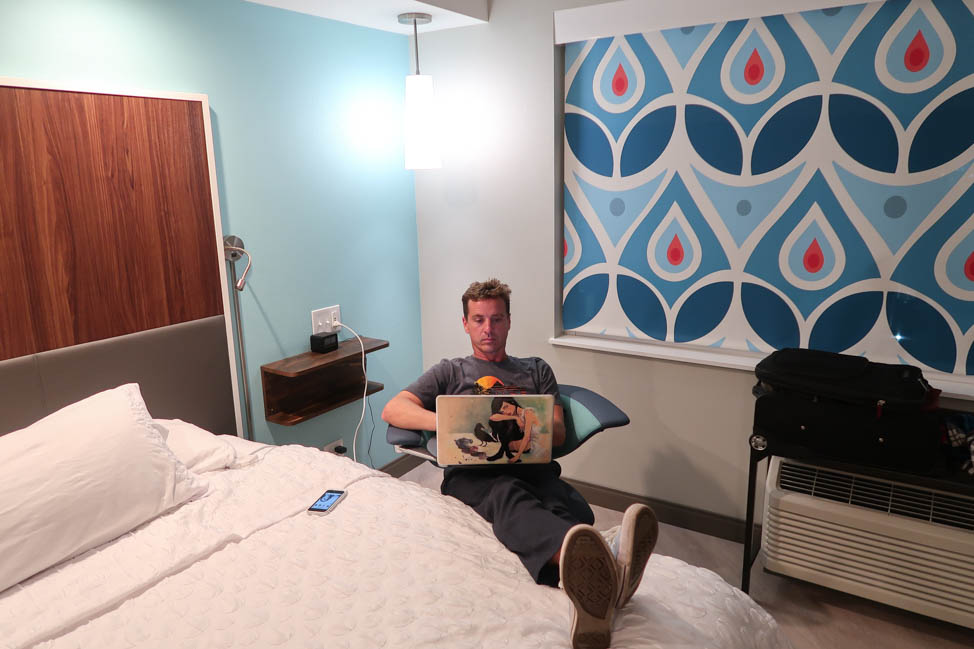
Had we still lived in an apartment in a big city, we’d likely pay anywhere from $50 a month each to $800 for a separate office. Since we do use our house as our office, we are able to write off 20 percent of the home—around $480 a month in our case—which is the maximum amount you can claim on your taxes, and bear in mind you do have to actively use the portion you write off for your office.
Cost of office space annually: $5,760 at the 20% write-off rate
Power and utilities, $350 monthly (write-off)
Our power and utilities averages out to about $350 a month. Again, we can write off 20 percent of this on our annual taxes, or $70 a month.
Cost of power/utilities annually: $4,200
High-speed Internet, $70 monthly (write-off)
We ditched cable years ago and only pay for Internet now (in addition to what seems like a dozen streaming services for leisure!). We pay for the highest-speed, fiber-optic Internet at $70 a month. And to date, we’ve had great experiences with our provider. Same as above; we can write off 20 percent of our Internet bill.
Cost of WiFi annually: $910
Looking for more advice for freelancers and small businesses on what you can and can’t write off? I wrote this handy tax guide just for you.
Web hosting, design + subcontractors
Once your website is designed and built—expect to pay anywhere from $7,500 to $25,000 for that, depending on the complexity of the site build and whether or not you already have photos and branding assets—you’ll want to keep your relationship with your development team alive should any problems arise.

Web maintenance, $2,500 annually
We have a great relationship with our developer Lee who has kept this site running and error-free for 10 years now. This varies by year, but on average we pay as much as $2,500 spread throughout the year for tweaks, new designs, and updates to our site and subsequent marketing materials. Anytime we have a site error due to a WordPress or plugin update, need new designs for things like media kits or simply want routine maintenance, Lee’s team handles it.
Cost of web maintenance annually: anywhere from $300 to $2,500 depending on work needed
Web hosting, $1,300 billed annually
Our web host charges us a pretty penny to host our site on theirs, and while yes, there are cheaper hosts out there, I’ve always felt confident in their customer service. Sometimes, it’s just worth it to pay more for guaranteed great service, you know? Note: You’ll pay for web hosting based on the traffic bracket you fall in, so it’s likely when just starting up a site, you’ll pay half of what I pay a month, if not even less.
Cost of web hosting annually: $1,300
Hosting for other websites, $252 per site
We also have a handful of other active websites, like our Odinn Media site and our public art nonprofit, which we’ve all moved to Squarespace, and I couldn’t recommend more. They’re substantially cheaper to run than C&C, which lives on WordPress, but still cost a bit of money to keep running. You can use our affiliate link to open a Squarespace account.
Cost of our secondary sites annually: $756
Domains, $550 a year
Besides Camels & Chocolate, we own about a dozen URLs—like kristinluna.com, dma-events.com and several others—that we renew annually at about $20 each per year via GoDaddy. You have to pay separately for a domain, FYI, and then use a service like Squarespace to host your site.
Cost of URLs annually: $550
Contractors, $520 a month
For the past seven years, we’ve employed a couple different social media pros to help out with our Pinterest, Facebook and Twitter, which has freed up a lot of our time. This is definitely an expense worth making if you own a web-based business and have multiple clients and irons in the fire, but aren’t ready to hire additional full-time employees. We also have a freelance video editor out of Maryland, a designer out of Canada who helps us with any new designs we may need for our other businesses and a plaque designer in Alabama, all of whom we hire on a contract basis when needed (but I didn’t include them in this cost analysis since they’re project-based).
Cost of social media contractors annually: $6,360
Equipment
Equipment can vary year to year—some years, we have to upgrade everything and some years only a few things—so I’ve averaged out what it costs annually to do this over time, rather than purchase a new, say, computer or camera each year.
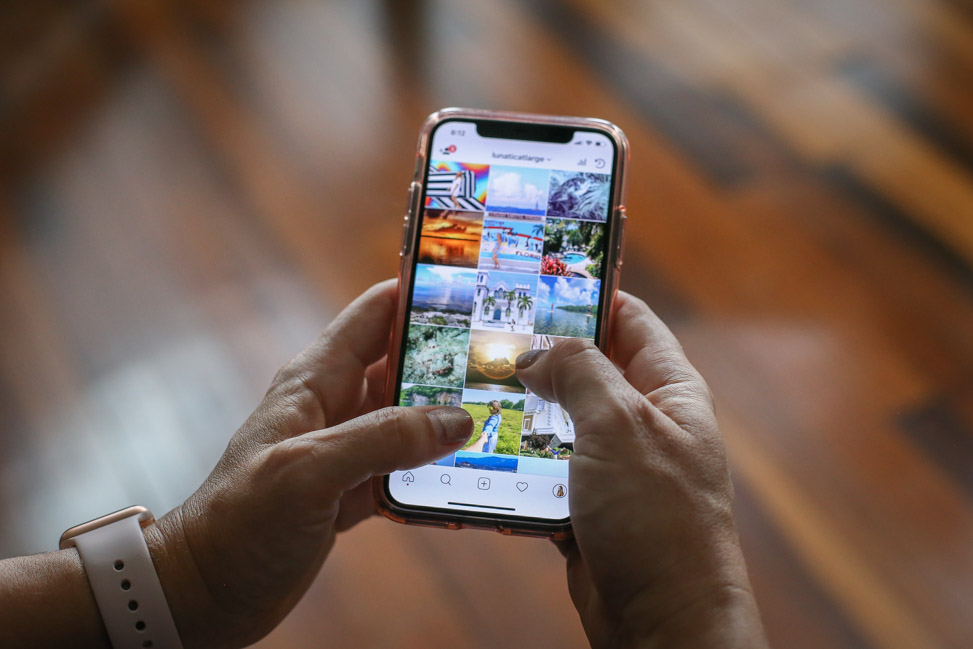
iPhone, $1,248 annually
Both SVV and I are on the annual Apple upgrade program. I have the highest-end model ($62/month) with the most storage, while he’s on an older model that still has a home button with the least amount of storage ($42/month). I recommend this now that none of the cell providers have the “renew your contract, get a new phone for $100” deal they used to offer. I weighed the pros and cons of doing the monthly deal with Verizon vs. Apple, and the fact that I can trade in my phone for a new one every single year—and that it also comes with AppleCare—immediately sold me. Six years and five upgrades later, I’m still happy with this decision.
Cost of phones annually: $1,248 for two phones
Computers, $2,500
Though we don’t always have to get new computers, this last year has been a whammy with both of us needing to upgrade our iMacs—SVV bought the standard iMac, while I sprung for the Mac Studio, which required a new Studio Display Monitor, too—and him buying a new MacBook Pro (another cool $2,000). Most years (or even every 18 months), I’d estimate we upgrade one computer and not three, which would average out to around $2,000, as we always opt for the fastest processor and highest amount of storage, because when we don’t, we inevitably end up having to upgrade it down the line.
Cost of computers annually: $2,000
Camera gear, varies
It always makes me laugh when someone wants me to do a free photo shoot for them because it doesn’t cost me anything. That couldn’t be further from the truth! A camera’s shelf life is determined by shutter clicks—anywhere from 150,000 to 300,000, which happens a lot quicker than you’d think in a digital imagery world where we take multiple iterations of every scene—meaning the more I pull the trigger, the closer I am to having to replace parts or even the whole body.
Here’s a full rundown of all the cameras and accessories we use, though I more often than not buy my equipment from B&H Photo, which offers competitive pricing and free quick shipping.
We have a total of four cameras in our arsenal, and while we probably only upgrade a body every second year—around $4,000 as we shoot mirrorless with the Canon R5 and Canon R6—we do occasionally add new lenses and routinely have to send our equipment into Canon for repairs and replacements. Plus, then you’ve got accessories—tripods, gear bags, monopods, gimbals, memory cards, spare batteries, underwater housing, etc.—and you can see that working in a photography profession is hardly easy on the wallet.

Last year, we spent around $20,000 in equipment because we needed a new mirrorless body and a full lighting kit for my studio photography business, but on a normal year, I’d estimate more like $2,500 to $5,000 conservatively.
Cost of gear annually: $5,000
Storage, $500 annually
A few years ago, we had an IT company build us a NAS server for $2,500 so that we could triple back-up all of our files. While that’s not an annual cost we incur, it was a big investment upfront, and given that we do so much photo work, we edit all images and video footage via a fast SSD drive, as well as always have one that’s used for a double back-up. At $300 a pop, our preferred drive isn’t cheap, but it’s reliable and small and sleek, meaning it easily fits in the pocket of my laptop bag. I go through two to three a year. There are also 500GB and 2TB models should you need less or more storage.
Cost of storage annually: $900
Vehicles, write-off (mileage)
We put around 20,000 miles a year on my vehicle and maybe 5,000 on SVV’s, which is a lot of gas purchased, oil changes and other routine maintenance. Note: You can either write off gas and maintenance (oil, tires, etc.) or mileage, but not both. We opt for the mileage route, so the above is just what it costs us annually to maintain my Jeep and SVV’s Audi since we use both of them for work travel. We also pay for AAA service, as well as insurance, of course, all of which is lumped into our annual vehicle cost that we write off on our taxes.
Cost of vehicles a year: 25,000 miles as a write-off
Software, services + subscriptions
One of the biggest things that has eaten into our bank account over the past few years is every software company’s insistence on building a subscription model versus paying outright for the software like we all could do once.

Business license, $250 annually
As an s-corp, we pay an annual fee to the city and state governments to be able to operate.
Cost of business license annually: $250
Accounting, $750 annually
We use QuickBooks, which was a one-time fee of $200—FYI, both SVV and my CPA sis recommend the desktop version and says “run, run far away from the web-based software,” so do with that what you will—to do all of our expenses and bookkeeping, plus pay Housholder Artman, PLLC, the accounting firm my granddad started in the 50’s, to do our taxes. We also pay our CFP to invest our 401K for us, but that’s a percentage of what’s in our fund, versus on outright monetary expense. If you have more cash flow to track to various vendors, I’d highly suggest hiring your CPA to also do your bookkeeping, which will start around $600 a month and is an expenditure worth making.
Cost of accounting annually: $750 for tax services
Phone service, $160/month
We have Verizon (I do not recommend) and have been on a family plan with my parents and sister for my entire life, so our slice of the pie equals out to about $80 each a month or $1,920 annually. When we go overseas, I pay the $10 daily fee to be able to use my phone abroad, but honestly it really only gives us enough data to use our maps for navigation. Other than that, it’s pretty useless, so I rely on hotel WiFi to do any heavy web-browsing or data transfers.
Cost of phone service annually: $1,920 for two people
Newsletter service, $19/month
After Mailchimp went up from $39 a month to $60, we very swiftly found a new option to deliver our newsletters for this blog. Using Flodesk is a bit more work on our end, but for substantially less money so it’s worth it. My second year, it will go up to $458 annually, but that’s still half of what I’d pay to stay on Mailchimp. Here’s our affiliate code, which will give you 50 percent of the first year, too.
Cost of newsletter annually: $229
Dropbox, $436 annually
Dropbox is one of the most beneficial expense we make each year, in my opinion. We each pay $120 a year for a Dropbox Plus account, which allows us 2TB of space and the ability to constantly collaborate on the same projects, while also sharing large and high-volume files with our clients. We use Dropbox Essentials, which gives us 3TB of storage each, and Dropbox is another that rewards you for paying annually with a lower price than the per-month rate. Here’s our affiliate code if you sign up.
Cost of Dropbox annually: $436 for two users
Jetpack for WordPress, $99 annually
Back when Furtherbound redid our site nearly a decade ago, they installed this premium plugin by WordPress that does daily automated backups of my site, keeps a 30-day archive and performs other routine checks I need for my site health.
Cost of Jetpack annually: $99
Pinterest scheduling, $171 annually
Pinterest is a significant driver of traffic to our site each month, with others Pinning our content, not to mention one of our social media managers actively maintaining my account there (we get around 1.5 million monthly views on Pinterest). I have used Tailwind for at least six years now, and I think it’s an invaluable tool for anyone who is actively using Pinterest to promote content, a service or a destination. If you sign up, please use my affiliate link here as I’ll receive a small commission.
Cost of Pinterest software annually: $171
Microsoft Office 365, $218 annually
We each pay for our own subscription for this, so that equals out to $109 a year (including tax) times two. Of all software we use the most, it’s Word and Excel, so this is not an expense I mind paying at all. If you’re using the free Apple Pages, just man up already and pay for Office. Pages is such a pain, and even with all Apple products, we often can’t open documents sent to us that were created in Pages. It just looks unprofessional.
Cost of Microsoft Office annually: $218 for two people
Adobe Creative Cloud, $660 annually for one
It irks me to no end that Adobe does not allow a small business like ours to share accounts. You can only be logged into two computers at once on an Adobe account, and as I’m always working simultaneously on my laptop and iMac, that means SVV has to pay for his own. So we’re now paying $53/month x 2 to use Adobe’s suite of products. Gulp. It’s hard on the wallet.
Cost of Adobe Creative Cloud annually: $1,320 for two users
Music services, $549 annually
I’ve gone back and forth with various royalty-free music services over the past few years for video-editing purposes, and while I like Soundstripe, my favorites that I’ve stuck to are Motion Array ($240/year) and Epidemic Sound ($300/year). If you have others you love, please drop them in the comments as I’m always looking for recommendations.
Cost of music services annually: $540
Keysearch, $135 annually
Keysearch is an SEO software that helps you find relevant search terms to attempt to rank for, and one I’m forever convincing myself I’m finally going to use, but have yet to really crack. Sometimes, I spend the time searching for keywords to rank for; others, I’m in a hurry and just gloss over it entirely.
Cost of Keysearch annually: $135
AppleCare + computer maintenance, $750 annually
We have so many Apple products—two iPhones, two iPads, AirPods, an Apple Watch, six active iMacs, Studios and MacBook laptops—so AppleCare is imperative for us. You always get 90 days of insurance included with any new product, but I definitely recommend purchasing the additional three-year coverage, which is typically $250, for any computer product. And every time my AppleCare expires, I usually renew it at $250 to $400 per device (that’s for a three-year plan).
The few times AppleCare hasn’t covered an issue I’ve had, or I’ve needed to upgrade my storage for which it costs a lot to go through the Genius bar, we use zMac out of Nashville, who has upgraded my battery and RAM and performed many other small tasks to my computers over the years.
Cost of AppleCare and maintenance annually: $750
Canva, $119 annually
If you’re only doing basis design work, you can probably get away with the Canva free subscription. But if you want to use logos, customize sizing and use it for more advanced projects, you’ll want to upgrade to the paid Canva Pro version at $13 a month (or $119 if paid annually). I use Canva daily and love it; it definitely beats learning Photoshop and Illustrator as it’s so user-friendly, not to mention much cheaper.
Cost of Canva annually: $119
Google One, $20 annually
I use Google Suite for my various email accounts. I hardly ever delete work emails, as you never know when you might need to reference them later (or as in our case, need to bring them back up for, ahem, legal matters…). You only get 15GB of storage with the basic, free Gmail account, whereas Google One gives you 100GB of storage. I upgraded years ago and still am only at 40GB. It’s completely worth not having to constantly cull your inbox every time you near that limit.
Cost of Google One annually: $20
1Password, $60 annually
With all the identity theft plaguing the Internet, plus the amount of personal information we all share on the regular, all of our accounts are locked down. I used to use LastPass, which I preferred to my current program of 1Password, but after a huge data breach, I made the migration.
Cost of password service annually: $60 for the family plan
News services, $950 annually
I finally canceled all 25(!) of my magazine subscriptions pairing them down to zero, but we do pay for three news services—The Washington Post ($12 a month or $144 annually), New York Times ($25 a month or $300 annually), Wall Street Journal ($12.50 a week or $650 annually)—as well as donate to news orgs like Wikipedia.
Cost of news services annually: $950 for three news services
Apps, $100 annually
There are several photo apps like Template and A Color Story that I either purchase, make in-app purchases or subscribe to. This isn’t a huge part of the budget as I mostly use my computer editing software for work projects, but probably averages out to about $100 a year. I did briefly pay to upgrade my free iCloud membership at $5 a month so I wasn’t constantly having to back up my phone to my computer, but I think Apple’s cloud is such a sham and never works right. I’d rather just upgrade my phone to more storage each year when I swap it out.
Cost of apps annually: $100
Professional development
I admittedly don’t attend a lot of conferences unless I am speaking at or producing them, but I am a member of a few organizations, as well as pay for one-on-one coaching and courses as the needs arise.
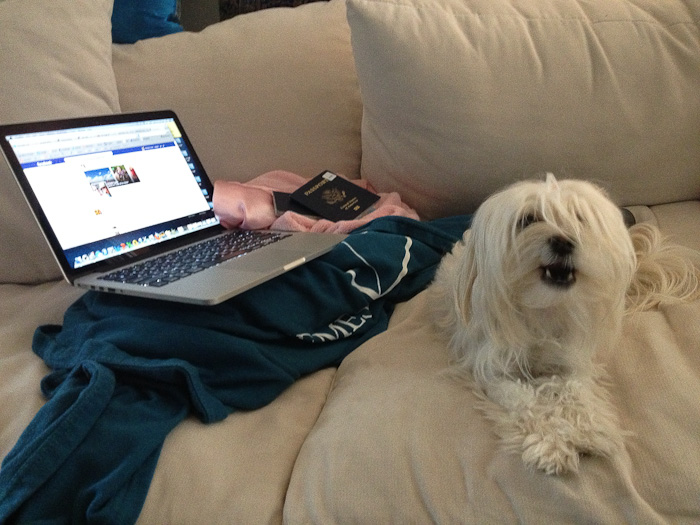
Courses and coaching, $500
I’m not a huge consumer of courses, but I do get sucked into doing a few annually—from SEO to affiliate marketing, photo editing to podcasting—when I see one that fills a hole in my skillset. I also hire experts in my field to give me one-on-one coaching on topics like photography lighting and editing.
Cost of courses annually: $500
Industry memberships and conferences, variable
With several memberships ranging from Tennessee Hospitality to our local chamber and Rotary, we probably spend close to $2,000 annually on membership fees alone, as well as another $500 to $750 a person for conferences like Rural Tourism Conference.
Cost of memberships annually: $4,000
**********
So there you have it: The grand total of the expenses I outlined here that Odinn Media pays as a baseline to stay in business annually is $44,551 compared to $30,202 when we did this exercise four years ago. Does that surprise you? Did you think it would be more? Much less?
There are, I’m sure, plenty of other miscellaneous costs I’m missing; for example, I didn’t even factor in the flights, in-flight WiFi, airport expenditures, hotels and Airbnbs that we often pay for out of pocket when traveling to conferences or on-site client meetings. We also make a lot of annual charitable contributions, not to mention spend a good deal of money on our own nonprofit, DMA-events, that I didn’t factor into the cost of running a media business as it’s an entirely separate 501(c)(3) entity.
Look, any business has overhead, I get it. And I’m not complaining: We chose this career, and I can’t imagine doing anything else. Being entrepreneurs just suits both of us as we’re creatives who are forever coming up with new ideas and are not afraid to test them out.
But next time you assume that because your freelance friend works from home, he/she has it good, is so much better off financially, yada yada yada, consider all of the above expenses, plus the fact that he/she is paying quarterly taxes (self-employment tax is no joke), health insurance for two—because we have a high deductible, our out-of-pocket doctors’ visits tallies thousands of dollars a year and doesn’t cover our derm, my annual well-women visits, my regular chiropractor and physical therapy appointments for lingering sports injuries, etc.—and, on top of all of that, paying credit card interest on client-driven expenses and setting aside money each month to invest in his/her own 401K.
We try to contribute as much as we can to our SEP each year, and employ both a CFP (my cousin) and a CPA (my sister) to keep our finances in line and make sure we’re setting ourselves up for retirement, which is also why we’ve started investing in real estate and currently own multiple properties (a whole other set of costly expenses that’s a story for another time).
This is also why you should never, ever, ever ask your writer/photographer/marketer friend to work for you for free. Because as you can see, it’s not actually “free” after all.
Running a web-based business isn’t cheap, no matter how you look at it, so use a blogger’s affiliate links when you can, click through to the site from his/her newsletter, and just be supportive and understanding that you are consuming a free product that takes time and money to produce.
What questions do you have about the cost of running a media company, blog or other online business?
For more tips to running a blog or media business, check out these posts:
- Blogging Basics: Tools of the Trade
- Copyright, Blogging + Social Media: Photo Usage in the Digital Age
- Show Me the Money! How to Diversify Your Income as a Writer or Creative
- Influencers, Want to Be More Hirable? Take These Tips to Heart
This blog may contain affiliate links to products or services I purchased out of pocket.
SAVE THIS POST HERE
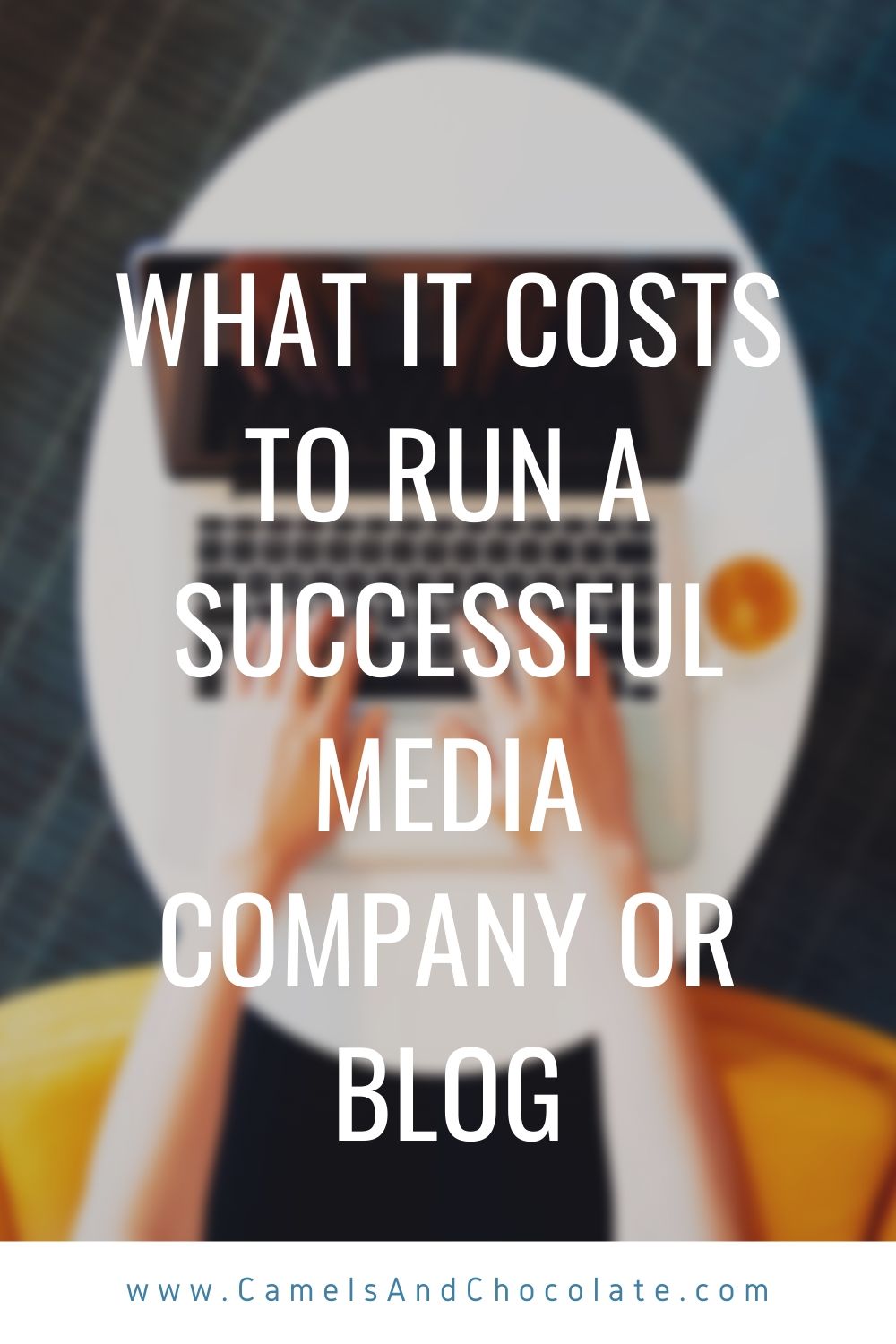
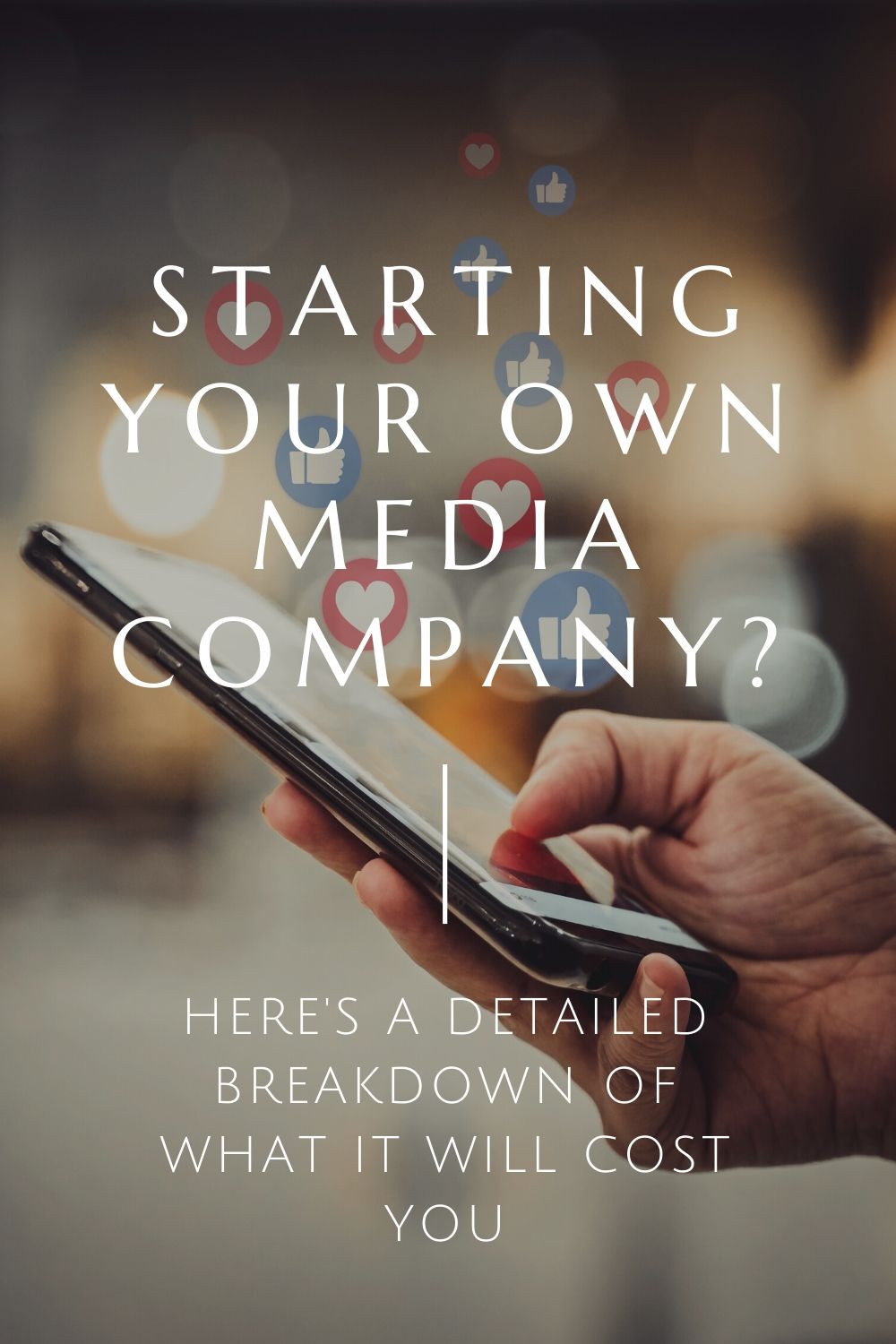



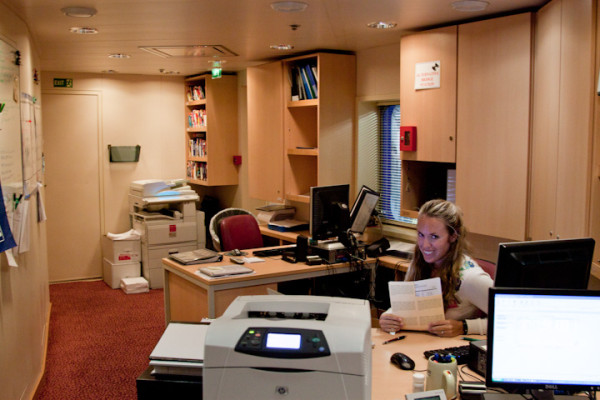










Danggggg. This persuaded me to not start lemondoes because of all the shit with which you have to keep up… probably not your intention but here we are. 🤷🏼♀️😂🤣
I still support the launch of LemonDoes.com! You could honestly just pay a little for the URL and hosting and pick a template that supports all you want to do (in the beginning).
Fascinating! Thanks for this peek behind the curtain.
As far as the line item for news articles, you may be able to get a lot of content free online via your local library. At least then if there’s articles you want to read from a publication every once in a while, you won’t have to pay for it.
Thanks, Andria! Supporting news organizations is something I’m happy to do, though, with so many lay-offs in the media (and that being my background). I do, however, check out most of my ebooks from the library!
That makes total sense! Supporting independent journalism has never been more critical. I just always have to remind people that libraries (my industry) are a treasure trove of goodies, since I’m frequently shocked how few people seem to know that.
For sure! And it’s a great reminder that since I canceled all my magazine scrips (since they were mostly ads these days…sigh), I can look for anything I need at the library. We have two library memberships, and I could not love the accessibility of downloading an ebook to my Kindle from anywhere in the world more!
Wow! Your sites must be earning that good for you to afford to spend $30,202 annually. My blog is way far behind yours but I hope to earn something decent in the future.
Wow, that’s a lot of expenses! Thank you for being so open and sharing these numbers. I think a lot of people don’t understand what goes into running a professional blog and business. Currently, I’m just paying for hosting, my domain name and Tailwind – and I struggle justifying those expenses. But I wonder what would happen if I invested in my blog (and I guess, myself) more.
Thank you for writing this! A. Now I don’t have to and B. I’m sending it to EVERYONE who asks me to work in exchange for pizza or beer or a cookie or lip gloss. Such a thorough post!
Right? People have NO idea what it’s like to run your own business, remote or not!
Phew! Exhausted just seeing how much goes into a blogging business, even though my Quikbooks report tells me something very similar. Going to check out a few of the services you mentioned. I few sound like I could use ASAP.
I honestly shocked myself by how much we spend to keep the lights on over here!
People have no clue. It really adds up fast! Great list that I’m sure will help many see what it really means to run a blog.